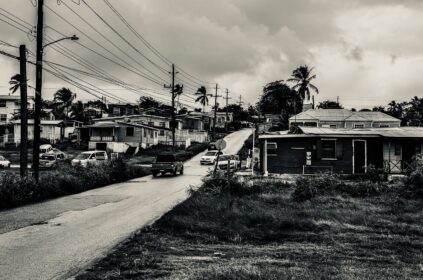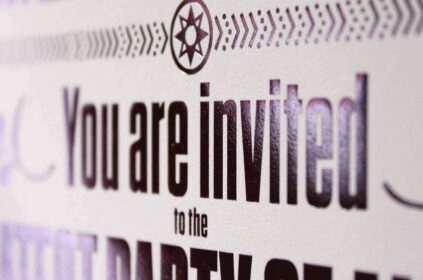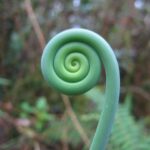According to Greek legend dating back several millennia, Sisyphus was punished by the Gods after his death for holding too high an opinion of himself. He was forced to push a boulder uphill. Each time, just as he reached the top, the boulder would roll away from him and back down the hill. He then had to push it back up again. Forever. This myth has inspired a wide variety of interpretations as well as books and movies, but I’ve been feeling a personal attraction to the story recently and thought I’d share some thoughts.
The Eternal Uphill Struggle
I have the great good fortune, at the age of 73, to be alive, with a loving wife and extended family including nine remarkable grandchildren, and financial security including great medical insurance and two beautiful places to live. I’ve survived two bouts with cancer – prostate cancer 12 years ago and multiple myeloma diagnosed in April 2023. The first was cured with surgery. The second will be with me for life, but is adequately controlled with drugs so far, leaving me with tolerable side effects. Truly a “charmed” life. And yet. I wake up every morning feeling stiff and cranky, some days worse than others, and roll myself out of bed to rustle up a cup of coffee. Every morning, it feels like I am pushing a boulder up a hill. Once each day gets fully underway, I usually feel OK. Some days are better than others. At the end of the day I am usually very tired, but I fall asleep easily. While I dream, the boulder gently rolls back down the hill and greets me the next morning when I wake.
I’ve talked with the medical team. They can’t tell me whether the stiffness and fatigue is from getting old, or an effect from the residual cancer or a side effect of the drugs. But it turns out, it’s common among myeloma patients. It’s also a frequent complaint among older people in general. Everyone has their own individual trajectory when it comes to aging and each cancer journey is unique, but it seems these feelings of morning aches and fatigue are quite common – like pushing a boulder uphill every day.
But we humans are not alone. All living things, in the process of surviving, face a similar cycle. Each day, or each varying period for different life forms, we all wake, search, feed, digest and expend the harvested energy to fuel our efforts to survive to the next cycle and do the same thing all over again. On a good “day” we may harvest excess energy to store for the future, to learn something new and valuable, or to reproduce. On a bad day – well, use your imagination. Nevertheless, the endless Sisyphean struggle is repeated by every living thing, from the cells in our own body, to all plants, animals, even bacteria – anything with a metabolism.
In a cosmic sense, this struggle is reflected in the concept of entropy, the sometimes gradual but always inevitable decline of order in all physical systems — the second law of thermodynamics. Everything is forever “winding down” towards a more homogeneous, disordered state. Mountains erode, gases disperse, water flows into the sea, machines wear out: Even the stars run out of fuel and die. Entropy, the scientific measure for disorder or sameness, always increases. Order decays into disorder. Each moment, each day, each millennium, entropy inexorably rolls the metaphorical boulder down the hill. The physical systems which comprise the universe – galaxies, stars and planets at the cosmic scale, mountains, oceans and forests at the terrestrial scale, all seem so permanent. And yet they are all ephemeral – temporary, local reversals to the prevailing tendency to decay. As often as, and as long as, any physical system seems to go up hill, it will ultimately lose the battle with entropy. Physicists hypothesize about how many trillions of years it will take for the universe to reach its inevitable icy death of total sameness, the “Big Freeze” that entropy demands.
Small comfort for us in our daily Sisyphean struggle. But there is a silver lining.
The Miraculous Counter-Intuitive Consequence of Entropy
As entropy exerts its inevitable “down the hill” influence on a physical system, it also creates flows of matter and/or energy. Consider a box with two chambers, separated by a door. One side has air, with molecules moving around in random “Brownian” motion. The other side is a vacuum. If you open the door, the air rushes to fill the vacuum and equalize the amount of air in each side. The rushing air is energetic and could be used, for example, to spin a wheel that could move a ball uphill. The entropy of the box increases, but the wheel “harvests” energy to move the ball uphill against gravity – which reduces the entropy of the ball.
Similarly, sunlight from the decaying sun is harvested by plants to build their structures and make flowers and seeds. This creates order and structure, and reduces entropy locally, even though the entropy of the sun increases. Taking this a step further, the discarded energy of dead plant materials is then recycled in the stomachs of animals to provide nourishment for them to grow and thrive. Entropy further decreases on the earth as animals thrive, even though entropy oveall increases.
Evolution also demonstrates a similar trajectory of decreasing entropy. A species embodies the information of its genetic code in the DNA of its individual members, and, in each generation, they expend enormous energy to birth the next. Through the continuing cycle of birth, life and rebirth, each generation contributes a tiny morsel of genetic information (who survives – who does not) to the evolutionary process. That valuable information constitutes a decrease in entropy. As it is harvested across the generations, it contributes to the slow evolutionary changes that improve the prospects for the species to thrive. Life expands, order and structure and information expands, and local entropy decreases, even as total entropy increases. (Remember the dying sun!)
For humans, thriving includes seeing, hearing, learning, thinking and socializing. These activities are foundational to the development of human civilization, which consists of sets of structures and practices far more ordered and complex than a single human. These structures include the invisible networks of human relationships, in addition to the tangible physical features of the built environment and the knowledge embodied in books and machines. Entropy and disorder has continued to increase in the universe, yet entropy has decreased on planet Earth as a result of the remarkable growth of order and complexity from a thriving human civilization.[1]
We can also broaden our consideration of human thriving to include our capacities for love and joy. These are different forms of energy and information. They arise and grow in and through our human relationships and they deepen and strengthen those relationships. Thriving together with love and joy is a different manifestation of increasing order and complexity. Local entropy is decreased, even if the energy expenditure increases entropy universally.
So how are these ideas relevant to our own daily struggle? Well, each day involves two countering processes. Entropy ensures that our cells and our bodies continue to decay. Aging, illness and cancer are markers of entropy. At the same time, we experience flows of energy, matter and information into and around us. We might be pushing the boulder, but we are still alive and can make the best use of those flows. We do not have to focus on the boulder. We can look around. We can enjoy our bodies and minds, even with our limitations. We can appreciate the beauty in our world, and the comfort and care of other people. If we have surplus energy ourselves, we can give it to others, perhaps helping them to push their boulder a bit, and to reduce their entropy. These gifts are available to us and we can use them to contribute to a virtuous circle of mutual thriving, shared good will and, ultimately, of love. We cannot banish entropy, but we can reduce it, at least locally, and for periods of time, by focusing on our thriving rather than our decay.
Conclusion
This morning, sipping a cup of coffee next to my wife, looking out at the mountains as the sun began to warm and brighten the peaks, I thought: Here I am enjoying a spectacle of rare beauty, sipping a luscious hot latte. This is very, very nice. It would be a stupid waste to wallow in a philosophical Hades pondering the boulder of stiff joints and decay, rather than basking in this glorious moment. As Omar Kayyam (the alleged tentmaker) said in one of the Rubaiyat quatrains – “make the most of what we yet may spend, before we too into the dust descend ……”
This does not mean that pushing the boulder uphill is fun. It is not. But along with the experience of stress, or pain, or fear, or boredom, there are also opportunities for the experience of peace, of joy, and of love.
So maybe Sisyphus is having some good moments, too.
_ _ _ _ _ _ _ _ _ _ _
[1] The footnote here is that complex systems and structures also do collapse, if the energy and information required to sustain them is disrupted, or if the system passed a “tipping point” (phase change), or if outside factors interfere. We’ve seen many setbacks in the history of life and humans.




















